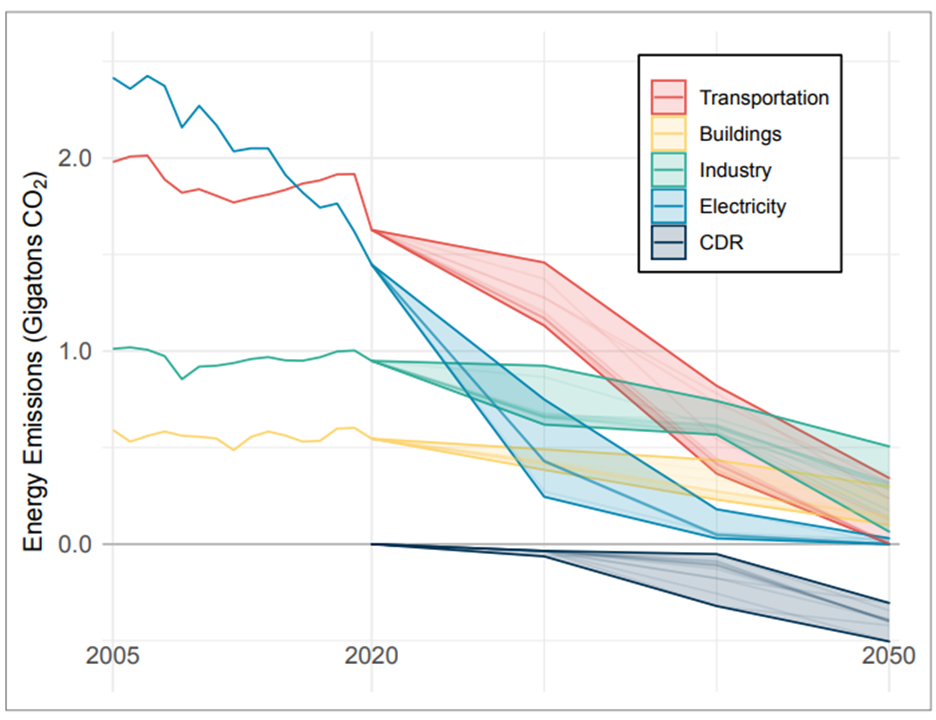In November of 2021 the U.S. government released “The Long-Term Strategy of the United States, Pathways to Net-Zero Greenhouse Gas Emissions by 2050”, laying out a series of benchmarks and high-level strategies for the country at-large through the next three decades. Meeting these goals requires significant changes to many aspects of the function of the nation, with transportation, energy generation, and the building sectors being massively important to our future national carbon footprint. The extent to which the federal government is able to legislate or mandate these changes is tough to pin down; different administrations have different priorities, the balance of power in the legislative branch varies over time, and the legality of the reach of federal mandates may be tested.

One thing that the federal government can do is lead by example, and the “Executive Order on Catalyzing Clean Energy Industries and Jobs Through Federal Sustainability” attempts to do just that. This order is multi-faceted, but targets the federal government’s direct contribution to emissions related to the three sectors listed above. It mandates pollution-free electricity on a net-annual basis by 2030 for federal assets. Vehicle acquisitions by the federal government need to be 100 percent zero emissions by 2035. The federal buildings portfolio is required to hit a 50 percent emissions reduction by 2032 and net-zero by 2045. The requirements are numerous, but the central intention is to move the federal government towards the forefront of sustainability and decarbonization.

Implementation of the federal-wide goals laid out in the executive order (EO), especially related to buildings, will be largely on the shoulders of the agencies themselves. Reductions in scope 1 and 2 emissions by the buildings portfolio of the agencies is going to mean effective spending towards deep energy retrofits, building electrification, expansion of energy generation and storage capacities, updated requirements for new buildings, etc. To facilitate all the various tasks the EO requires, the Council for Environmental Quality (CEQ) is given a broader mandate, including the re-establishment of the Office of the Federal Chief Sustainability Officer within the CEQ and implementation of the Guiding Principles for Sustainable Federal Buildings across the agencies.

The extent to which federal leadership in this form translates to changes in the country at-large is unclear at this time, but it’s not unreasonable to say that the success of this EO in reducing federal related emissions will come down to the effectiveness of each dollar spent on federal assets. As the President does not have direct control of the purse strings, the EO comes with a lot of mandates and no direct funding and a lot of federal budget will need to be reapportioned and/or reassigned. Hitting the targets laid out in the decarbonization pathway and/or the mandates from the EO will require very diligent and intelligent spending.
Optimization of federal dollars towards emissions reductions can provide fundamental information to the rest of the market on cost effective, high impact strategies in key sectors. Implementing tracking of the life-cycle cost effectiveness of these funds and disseminating that information in an understandable fashion to the market at-large can be a key part of making these “lead by example” measures effective at transforming assets in the country as a whole.
Lifecycle cost effective spending requires an understanding of the value generated by investments. Economic analysis like that done at Autocase is necessary to understand the nature of that value. The outcomes of design decisions or investments towards decarbonization, and sustainability in general, are many fold and accrue to different stakeholders. Identifying the highest value investments, communicating that value to the appropriate parties, and disseminating and digesting that information is an important step towards meeting our collective goals.
0 Comments